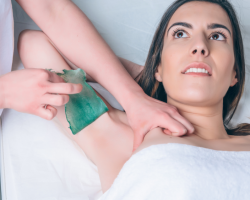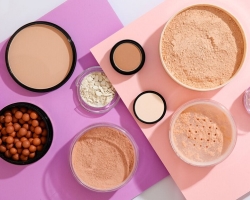Do I need to remove the cuticle? How to do it correctly?
Content
- Cycle care at home
- How to strengthen the cuticle?
- Video: nail care/ cuticle/ removers and oils
- How to cut the cuticle with scissors?
- Cutter
- Cream and gel to remove cuticle
- How to use a pencil to remove cuticle?
- Video: Circular care pencil
- Natural cutters remoters. How does essential oil remove and strengthen the cuticles?
- Recipe: Useful oil for cuticle
- Video: how to soften cuticles: nail care, manicure
- Damage and inflammation of the cuticle: treatment
- When does the cuticle fungus appear, how to treat?
- Video: We get rid of the cuticle forever
The services of a professional manicure master require the cost of both time and money. Not everyone has the opportunity to receive salon care for hands and nails as often as this would like.
Women and men often make hygienic manicure at home, while they do not always know how to properly perform certain manipulations. So, the issue of caring for the cuticle is difficult. Do I need to remove it? If so, how to do it.
Cycle care at home
The term “cuticle” in biology can mean several concepts at the same time. If we talk about the nails of a person, a cuticle is called a film made of epithelial fabric, which at the bottom of the nail plate covers its part. The nail skin grows in the form of a semicircle.

The cuticle performs the following functions:
- It protects the nail bed and matrix from water and air entering, and, accordingly, from dirt, bacteria, other foreign bodies
- Through the nail skin, the nail is powered
Doctors and masters of manicure endlessly argue about whether it is necessary to remove the cuticle during hygienic manicure. After all, this skin is alive, and, on the one hand, its removal is fraught with:
- damage to the sprout zone of the nail
- weakening the nail
- penetration into the sprout of infection
Important: so that this does not happen, many experts recommend special care for the nail skin. It consists in moisturizing and strengthening the cuticle, careing for its pushing from the nail plate
On the other hand, part of the cuticle will be rolled over time:
- It doesn't look aesthetic
- Burrs can form, the skin around the nail is inflamed
- Inflamed skin leads to inciting the infectious process in the nail area
- Nutrition of the nail deteriorates, which leads to its weakening and slowing down growth

The conclusion suggests itself: if the cutter is carried out regularly, it can not be removed. If it grew up too much, burrs appeared, the issue should be resolved radically.
There are certain rules for caring for a cuticle at home:
- It should be carried out regularly, once every 5 to 7 days, depending on the growth rate of the nail skin
- Manipulations begin with a massage in which you can use special vitamin oil. Massage helps to improve blood flow in the nail area, accelerate metabolism in epithelial cells. The process of keratinization of the cuticle proceeds slower
- It is necessary to use a special tool for softening the nail skin. It can be purchased or with your own hands
- From time to time, you need to make your hand baths. If you use essential oils, decoctions of herbs, clay, beekeeping products, other folk remedies, or special cosmetics, the condition of not only cuticles, but also nails and skin on the hands will improve
- The cuticle should be moved away with a special stick. Better not metal, but from orange wood
IMPORTANT: Carrying procedures can only be carried out with a healthy cuticle. If it is inflamed, all that needs to be done is to use wound healing, anti -inflammatory and antiseptic agents

But what you can never do is to dig a cuticle, pick it with nails, try to cut down with manicure scissors. After such a fingers will look untidy, in addition, the risk of infection of the nail and skin around it is very large.
How to strengthen the cuticle?
To strengthen the cuticle at home, you can do:
- massage
- special baths
- wrapping paraffin
Important: during all these caring procedures, it is possible to feed the cuticle, the nail and skin on the fingers with many useful substances. As a rule, they are contained in sufficient quantities in folk and cosmetics used for procedures. It is also recommended to buy liquid vitamins A and E in the store
- Massage is best done with special oil. Liquid vitamins are also dripping there. You can carefully rub the cuticle with a terry cloth, a special brush or a soft toothbrush moistened in oil. Nail skin massage is done with non -intensity circular movements
- Courting baths for the nail skin and nails are made every 5-7 days constantly. Therapeutic-every day with a course of 10-15 procedures. To strengthen the cuticle, decoctions of herbs, vegetable, essential and cosmetic oils, sea salt, mud, honey, plant juices, and other products with a high concentration of nutrients are used.
- A small piece of paraffin is heated in a water bath. After using the greasy cream, the fingertips are lowered into the bath with paraffin 3-4 times, put on plastic gloves and warm mittens. In 15 minutes of procedure, the nail plates and the skin around them will receive the necessary nutrition

VIDEO: Nail care/ cuticle/ removers and oils
How to cut the cuticle with scissors?
It so happened that a significant part of the cuticle was keratinized and began to lift up. It needs to be removed. Rather, not the entire nail skin, but only a dead part of it. After all, the living still performs its own functions.
You can remove the keratinized part with special scissors, the tips of which are thin and sharp. Experienced manicure masters say that, unlike forceps, such scissors do not catch a living fabric, after their use there are no cuts.
- Using the remedy - a remover or folk remedy, you should soften the nail skin
- The tips of manicure scissors or orange stick carefully lift the part of the cuticle to the nail plate.
- The keratinized part of the cuticle is carefully cut
- If it is difficult to remove the nail skin in the corners of the plate with scissors, they are additionally used forces

Important: good scissors for the cuticle are the following parameters: the presence of a bolt (then the blades are not loosened), the length of the cutting part is about 2 cm, a side bite (provides a lower trauma of the procedure), bent ends
Cutter
The cuticle can not be trimmed, but carefully file a special file. This method is preferred by opponents of a trim manicure.
The use of the cutting file has a number of advantages:
- After cutting with scissors or forceps, the nail skin grows faster. The traumatic procedure becomes necessary more and more often. Sprinking, on the contrary, slows down the growth of the cuticle
- When using a file, the risk of scratching, sadden, cut the living part of the cuticle and the skin around the nail is minimized
- If you use a cuticle file in combination with special means based on fruit acids, over time the cuticle will completely stop increasing on the nail plate

Important: you can remove the nail skin not the first file that falls, but special. Its surface resembles bee honeycombs, and plastic fuses are present on the sides. The saw effectively polishes the skin, while it does not damage the sprout zone of the nail and the nail plate
Cream and gel to remove cuticle
Almost all brands for manicure have creams and gels for removing the cuticle. Their price range is wide enough. If we talk about quality products, all of it has the following properties:
- effectively softens the cuticle
- slow down her growth
- moisturizes and nourishes the nail plate and living skin around the nail
- does not damage the nail
- minimizes the risk of infection

As a rule, there is an instruction on its use. The generalized algorithm is as follows:
- Cream or gel is applied to the skin from below and on the sides of the nail plate
- Waiting for 1 to 10 minutes
- The cuticle is neatly shifted by an orange stick. If her keratinized edge sticks out, it is cut with scissors
- The remnants of the gel or cream are removed from the nail with a cotton pad, the hands are washed

Important: unfortunately, many are allergic to gels and cream creams. Also, they dry the skin. Therefore, experts advise applying the product not on all fingers at the same time, but 2-3 at a time
How to use a pencil to remove cuticle?
A pencil for removing the nail skin is very convenient to use. He looks like a felt -tip pen, whose core is saturated:
- oils
- fruit acids
- by alkalis
- other biologically active substances

It softens the skin around the nail, inhibits the processes of the increase in the cuticle on the nail plate and its keratinization.
- A pencil for clean dry hands is used
- Pencil core should be drawn around the skin around the nail
After using this convenient remedy, the cuticle is either pushed back or removed mechanically - After the procedure, the hands should be thoroughly washed
VIDEO: Circular care pencil
Natural cutters remoters. How does essential oil remove and strengthen the cuticles?
It is possible to take care of the nail skin, remove its dead part with the help of folk remedies.
- Grapefruit peel. Citrus fruits contain a lot of useful products, especially a lot of them in the zest. Essential oils and organic acids contained in the white part of the grapefruit skins are necessary to care for the cuticle. It is enough to take a small piece of the peel, attach the white part to the skin near the nail and make massage so that the fingers look well -groomed and are healthy
- Cream with calendula. Natural antiseptic, anti -inflammatory and vitaminizing agent, calendula, in the form of a decoction of dry colors, is added to a regular cream for hands and nails. Otar is prepared from 0.5 cups of flowers per 0.5 liters of water, filtered. 10 drops of decoction are added to the portion of the cream
- Apricot seeds. 4-5 pcs. Dried bones are placed in a plastic bag, covered with a towel and crushed with a hammer. Small fragments are mixed with greasy hand cream and used to exfoliate the keratinized part of the cuticle
But the most effective when caring for the cuticle, nails and skin of the hands are oil:
- castor
- almond
- burdock
- sprouted wheat
- jojoba
- apricot seeds

To take care of the nail skin, it is enough to heat a small amount of oil in a water bath, drip 1 drop on the skin near the nail and rub it well. An even better effect will be if you enrich these oils with vitamins A and E, essential oils (2 drops per 1 tbsp. A spoonful of oil - foundations).
Recipe: Useful oil for cuticle
Need:
- oil is the base, for example, pink - 1 tbsp. a spoon
- essential oils (cedar, tea tree, ylang-ylang)-3 drops
- Aevit - 1 capsule
- propolis oil extract - 4 drops
- Oil - the basis is warm in a water bath
- Add additional components to it
- Wet cotton wheels in healthy oil, weedly wipe the nails and the skin around them.
- Repeat the procedure every time during the performance of hygienic manicure
VIDEO: How to soften cuticles: nail care, manicure
Damage and inflammation of the cuticle: treatment
The cuticle can become inflamed due to severe growth, mechanical damage or infection. Inflammation is manifested:
- redness and hyperemia of the skin around the nail
- peeling the skin around the nail
- itching
- pain
Important: cut, grind, remove the damaged cuticle in any other way

First you need to take treatment:
- Antiseptic drug. The skin around the nail plate is treated with hydrogen peroxide, alcohol or iodine
- Creams and ointments. Effective for various kinds of infections of the Vishnevsky ointment and locoid
- Folk remedies. These include baths with sea salt and iodine, with a decoction of chamomile, calendula and celandine, honey wraps, wiping onions, so on
The situation is especially dangerous when an abscess is formed between the cuticle and the nail plate, in other words, an abscess. It is better to contact a surgeon with such a problem.

Help to oneself is to open the abscess.
- It is necessary to prepare sterile tweezers and manicure scissors (they are heated on fire and treated with alcohol)
- A finger with an abscess is also treated with alcohol
- The cutter is neatly pushed with tweezers so that the abscess is opened
- With a finger of the other hand, wrapped in an alcohol moistened with an alcohol, press the abscess and release pus
- The wound is thoroughly washed with hydrogen peroxide until it ceases to bubble (this means that the bacteria are killed)
- Treat the wound with iodine and bandage with a sterile bandage
- If necessary, the procedure is repeated several times
Important: if after a few days the inflammation of the cuticle does not completely pass, the visit to the doctor cannot be avoided
When does the cuticle fungus appear, how to treat?
The fungus on the fingers appears less often than on the feet. One of its symptoms is the “manicure effect” in which pathogens destroy the cuticle. Moreover, not its horn layer, but also a living epithelial tissue. The protective barrier that prevents the penetration of infection into the body is deeper through the nail bed.

The fungus manifests itself:
- Redness and peeling of the skin on the fingers, the appearance of the so -called fungal gloves and deep cracks between the fingers
- A change in the color of the nail, its thickening, brittleness and relaxation
- Unpleasant odor
- Lagging the nail from the nail bed until it falls
The ailment is treated with antifungal agents inside and externally. About the treatment of onychomycosis you can find out in detail here.







